2017 Toyota 86 Service, Tires & Repairs
Get Started
Complete Auto Care for Your 2017 Toyota 86
-
TIRES FOR YOUR 2017 Toyota 86 View Tire Info GET TIRE PRICING
-
REPAIR FOR YOUR 2017 Toyota 86 View Repair Info SCHEDULE REPAIR
-
MAINTENANCE FOR YOUR 2017 Toyota 86 View Maintenance Info SCHEDULE MAINTENANCE
-
OFFERS FOR YOUR 2017 Toyota 86 Limited Time Tire Offers VIEW ALL COUPONS
2017 Toyota 86 Tires
Recommended Tires | Tire Information
2017 Toyota 86 Tires Sizes, Speed Ratings, and Inflation
Not sure about your 2017 Toyota 86 tire size? Use the following chart to find information on tire size, speed rating, and inflation.
| Trim Level | Speed Rating | Inflation in PSI F/R | Tire Size |
|---|---|---|---|
| 2017 Toyota 86 Base* | V | 35 PSI/35 PSI | P215/45R17 |
| 2017 Toyota 86 Base* | W | 35 PSI/35 PSI | 215/45R17 |
| 2017 Toyota 86 Special Edition* | V | 35 PSI/35 PSI | P215/45R17 |
| 2017 Toyota 86 Special Edition* | W | 35 PSI/35 PSI | 215/45R17 |
|
2017 Toyota 86 Base* Speed Rating: V Inflation F/R: 35 PSI/35 PSI |
|
2017 Toyota 86 Base* Speed Rating: W Inflation F/R: 35 PSI/35 PSI |
|
2017 Toyota 86 Special Edition* Speed Rating: V Inflation F/R: 35 PSI/35 PSI |
|
2017 Toyota 86 Special Edition* Speed Rating: W Inflation F/R: 35 PSI/35 PSI |
* Note: these models have different tire sizes depending on vehicle options.
Recommended Tires for Your 2017 Toyota 86
What tires are best for a 2017 Toyota 86? Check out the following tire brands and types.
 Blizzak WS90
Blizzak WS90
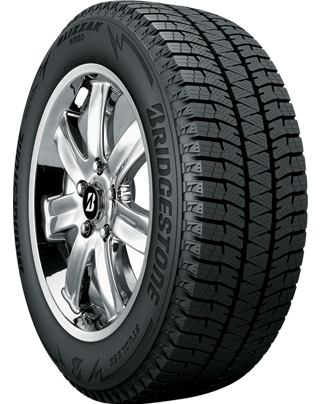
- No warranty
- Winter
- Winter
 Potenza RE71RS
Potenza RE71RS
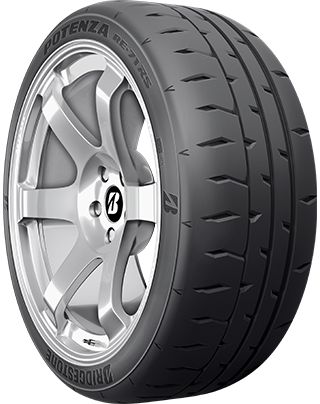
- No warranty
- Summer
- Performance
 Potenza Sport
Potenza Sport
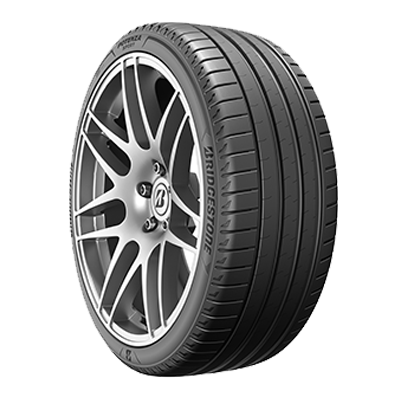
- Platinum Pact Limited Warranty
- Summer
- Performance
 Potenza Sport AS
Potenza Sport AS
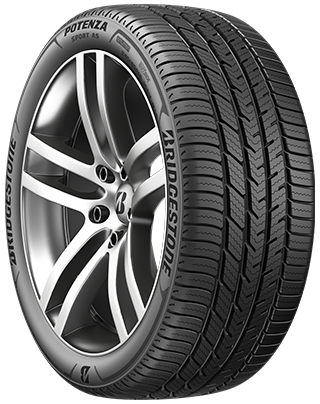
- Platinum Pact Limited Warranty
- All-Season
- Performance
 DriveGuard Plus
DriveGuard Plus
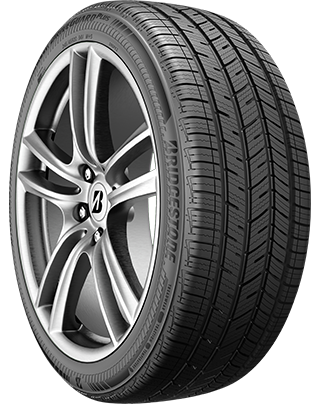
- Platinum Pact Limited Warranty
- All-Season
- Performance
 Ecopia EP422 Plus
Ecopia EP422 Plus
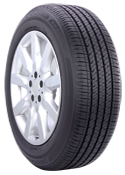
- Platinum Pact Limited Warranty
- All-Season
- Performance
 Turanza QUIETTRACK
Turanza QUIETTRACK
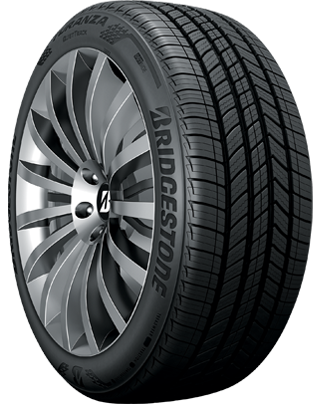
- No warranty
- All-Season
- Performance
 WEATHERPEAK
WEATHERPEAK
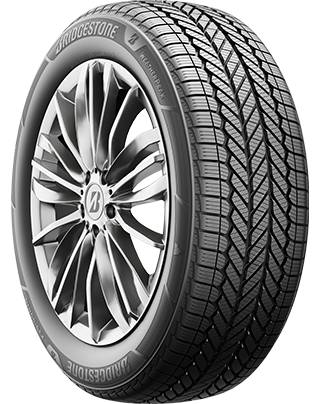
- Platinum Pact Limited Warranty
- All-Season
- Passenger Tires
 Firehawk AS V2
Firehawk AS V2
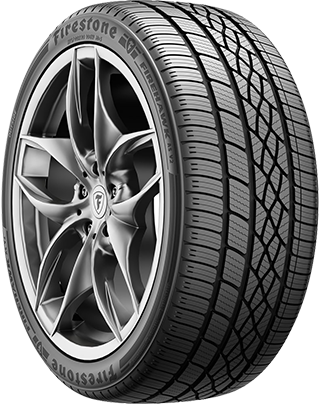
- No warranty
- All-Season
- Performance
 Firehawk Indy 500
Firehawk Indy 500
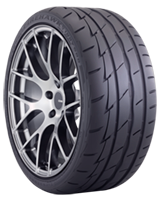
- Gold Pledge Limited Warranty
- Summer
- Performance
 WEATHERGRIP
WEATHERGRIP
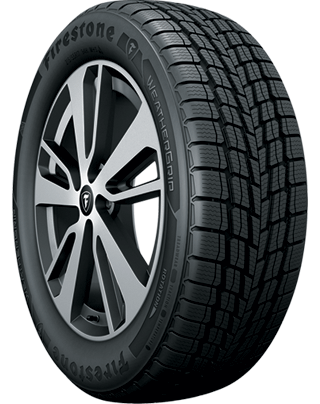
- No warranty
- All-Season
- Passenger Tires
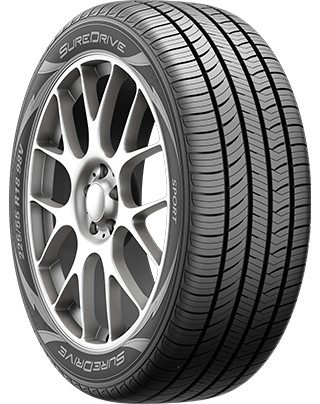
- No warranty
- All-Season
- Performance
 PROXES R1R
PROXES R1R
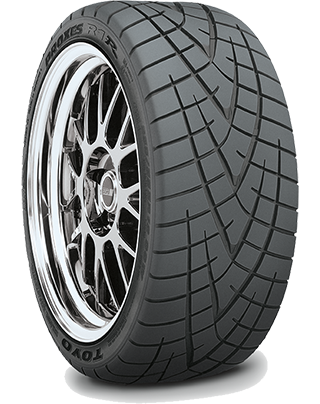
- No warranty
- Summer
- Performance
 PROXES Sport
PROXES Sport
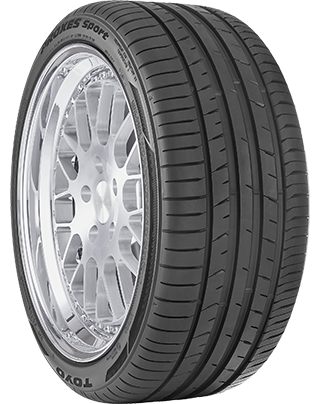
- No warranty
- Summer
- Performance
 PROXES Sport A/S
PROXES Sport A/S
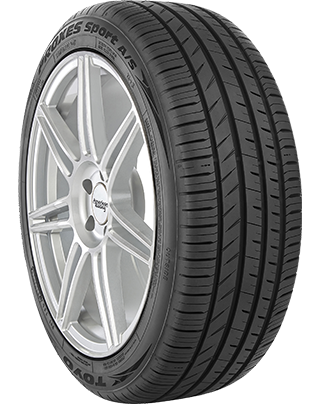
- No warranty
- All-Season
- Performance
2017 Toyota 86 Tire Information
Beyond the correct tire size, you also want to consider a handful of other factors when buying new Toyota 86 tires like where and how you drive, and what tire brand you trust most. When evaluating your driving conditions, think about where you live (countryside vs. city vs. mountains) and the kind of unexpected weather you're likely to experience. Drivers in states that fully experience all four seasons often buy two sets of tires: one for winter and one for summer. Other drivers prefer the convenience of all-season tires. They make one trip to the tire shop and they're pretty much ready for rain, light snow, or sun!
Driving style is next on the list to think about when buying tires. If you're an avid off-roader who yearns to pioneer new paths, you have very different tire needs than a highway commuter who doesn't hit the hills very often. Talk to a tire technician at Firestone Complete Auto Care for help choosing the best tire for you, or start shopping for Toyota 86 tires online.
2017 Toyota 86 Tire Installation & Rotation
Firestone Complete Auto Care installs more tires on more cars than most other companies. We're your one-stop shop for tire installation, rotation, and ongoing maintenance! We make it easy to buy new 2017 Toyota 86 tires online and book an installation appointment at the same time.
2017 Toyota 86 Tire Questions
-
Why does Toyota tire inflation matter? The right tire pressure can make all the difference. Proper tire inflation helps increase fuel economy, improve braking time, and boost tire lifespan! Even a small change in tire pressure can impact your driving.
-
Why are there numbers on the side of my Toyota 86 tires? Your tire sidewall gives you information about load carrying capacity, speed rating, treadwear, traction, and tire size. Talk to one of our tire technicians to learn how to read the numbers on your tire!
-
Is there an easy way to check Toyota tire tread depth? Stay on top of your tire tread depth to help avoid a dangerous drive. You can check tread depth with a penny. Hold the penny so that Abraham Lincoln is facing you, then place your penny into a tread groove upside down. If you can see the top of Abe’s head, your tread is shallow and it might be time for new Toyota 86 tires. Grab a penny. Hold the so that Abe Lincon's head is facing you and his hair is pointing toward the ground. Then, place the penny into a tread groove. If you can see the top of Abe’s head, your tread is shallow and it might be time for new Toyota 86 tires.
2017 Toyota 86 Repair
How do I learn more about auto repairs? Click on a service below to read about the types of Toyota 86 repairs we do at Firestone Complete Auto Care.
Get Repairs for Your 2017 Toyota 86
No driver looks forward to car repairs. But we work to provide you with a different experience at Firestone Complete Auto Care. When it’s time for 2017 Toyota 86 repair services, head to your nearest Firestone location and our skilled repair technicians will get your 86 back on the road. Before we begin any repair work, we’ll diagnose any issues and answer your questions about potential repair options. We’ll never recommend a repair we don’t think is necessary for your safety or the performance of your Toyota.
How Much Does Toyota 86 Repair Cost?
Several factors can affect the cost to repair your 2017 Toyota 86, including what kind of repair you need, costs of replacement parts or repair supplies, the amount of labor necessary to get the job done, and your locale. They're updated regularly!
A few different aspects can influence repair costs for your 2017 Toyota 86, like
Questions About 2017 Toyota 86 Auto Repairs
-
Can scheduled maintenance help me avoid repairs? The cheapest 2017 Toyota 86 repair is the one that isn’t necessary in the first place! Staying up-to-date with your car’s scheduled maintenance services is a great way to keep future repair costs low.
-
What's wrong if something feels 'off' in my Toyota? No, we’re not talking about finding the best jams on the radio! You know your car best, and you’re the first person who will notice if something doesn’t feel right (like new smells, sights, or sounds coming from your car). If you sense that something is 'off,' stop in for a Courtesy Check to have these symptoms checked out ASAP. Early action could help you prevent Toyota 86 repairs.
-
Do I have to get the repairs you recommend for my Toyota? Trust is more than just a saying on the wall. It’s a window underneath it. That’s why we won’t recommend services or repairs for your 2017 Toyota 86 unless we think they’re vital to your safety on the road.
Brake Repair for Your 2017 Toyota 86
Your Toyota 86 engine may be strong and reliable. But if you can’t brake, it might as well be scrap metal. Don't wait if you're experiencing brake squeaks or a loss of braking power. Unresponsive brakes make it tough to give the road your best. Plus, ignoring your brake problems can result in more damage and higher brake repair bills. Go to your local Firestone Complete Auto Care for 2017 Toyota 86 brake repairs. We offer many affordable brake repairs like pad/shoe replacement, brake rotor/drum resurfacing, brake fluid exchange, and wheel cylinder and brake caliper installation.
Toyota 86 Brakes Questions
-
Why is my 86 shaking as I brake? If your 86 shakes when you brake, you could be dealing with warped rotors, faulty brake calipers, worn brake pads or rotors, or loose or worn suspension parts. Schedule a free brake inspection at Firestone Complete Auto Care for help diagnosing your brake issue.
-
What is the average lifespan of 86 brake pads? Brake pads generally last between 30,000 and 40,000 miles. Your driving can affect how long your 86 brake pads last, though. For example, mainly driving on highways and gradually braking can help increase the lifespan of your brake pads, and carrying hefty loads or riding your brakes can shorten it.
-
Can brake fluid leak when my 86 is off? Your 86 brake system is a closed hydraulic system, which means that the brake fluid should not leak out of the system under normal circumstances. However, over time, the various components of the brake system can wear out or become damaged, which can cause brake fluid to leak out of the system.
Repairing Your Toyota 86 Drivetrain
You don't want to go to just anyone for drivetrain repair. Drivetrains for front, rear, and all-wheel-drive and 4WD vehicles are all different. You want to go to Firestone Complete Auto Care. We can help repair all of your 2017 Toyota 86 drivetrain components Your 86 might need driveshaft repair if you notice clunks when shifting, vibration as your vehicle accelerates, resistance when turning, or heavy vibrations in your floorboards.
2017 Toyota 86 Drivetrain Q&A
-
How do I know if my Toyota drivetrain is damaged? Hear noises toward the back of your Toyota 86? See fluid leaking? Having issues turning? These could all be signs of drivetrain damage you don't want to ignore. Take action quickly to catch repairs or replacements before something more severe happens.
-
What triggers the malfunction indicator light (MIL) in a 86? Engine problems, transmission problems, faulty sensors, electrical issues, misfire issues, and connector problems could all cause your 86’s malfunction warning light, or better known as the check engine light, to illuminate.
-
Is a drivetrain malfunction in my 86 serious? A drivetrain malfunction in your 86 should never be taken lightly. Driving with a malfunctioning drivetrain can put you in danger and lead to further vehicle damage, so it's essential to have a qualified mechanic assess and repair the problem as soon as possible.
Wheel Alignment for 2017 Toyota 86
Alignment services involve precise adjustments to your Toyota 86’s suspension system, the connection between the vehicle and the wheels. During the service, the individual angles of your tires are adjusted so that they come into contact with the road in just the right way — the way Toyota intended them to. Before we adjust the alignment of your 2017 Toyota 86, we’ll start by checking the current alignment angles. If needed, we'll adjust your wheel alignment angles to match Toyota recommendations.
Answers to Toyota 86 Alignment Questions
-
How can I avoid knocking my Toyota 86 out of alignment? Potholes and uneven roads can knock your car out of alignment, so stay aware of the road ahead and adjust your speed (or avoid these obstacles whenever it’s safely possible).
-
How often should you get a wheel alignment for your 86? Typically, your alignment should be checked every 6,000 miles or 6 months, whichever comes first. Double-check your 86 owner’s manual for Toyota's exact recommended schedule.
-
Does getting new 86 tires mean you need an alignment? It’s likely not a requirement to get an alignment when you install new tires on your 86, but it's a smart idea to do so anyway. An alignment can help ensure even tire wear, smooth handling, and better fuel efficiency.
2017 Toyota 86 Engine Services
When your Toyota 86 engine needs repairs, our expert techs will let you know what needs to be done and why before they get started. We don't start working until we have your approval. If a repair isn’t urgent right now, we’ll let you know. We'll also tell you if it's necessary for your safety. We want to provide you with the information you need to make an informed engine repair decision. Turn to Firestone Complete Auto Care for your 2017 86 engine repairs and you can feel good knowing that we only use Toyota-compliant replacement parts such as the timing belt, engine oil seal, fuses, or other parts.
Engine Q&A 2017 Toyota 86
-
Why does my 86’s check engine light come on when I start it? It's okay if your check engine light comes on when you first start your vehicle. This is a sign that your vehicle is testing its circuits. The light should go off shortly. Bring your vehicle in if it doesn't.
-
Why does my Toyota engine sound different? Unusual noises can signal a problem with your Toyota 86 engine. Tapping or knocking could mean you're low on oil. Whistling could mean a belt is misaligned or there's an intake leak. Squealing can indicate a loose fan belt, and grinding might be coming from the brakes, not the engine.
-
What could damage a Toyota engine? Certain driving habits can hurt your engine. These habits include driving on an empty fuel tank, revving your engine while the vehicle is in Park, or slamming the gas pedal while the engine is still cold. Steer clear of these habits to help protect engine performance and efficiency.
Tire Repair for Your 2017 Toyota 86
If the road has been rough on your 2017 Toyota 86 tires, Firestone Complete Auto Care can help. Our tire technicians can determine whether it's safe to plug and patch the tire, or whether it needs to be replaced. We'll start by evaluating the state of wear, the location of damage, type of damage, and the size of the damage.
If a repair on your 2017 Toyota 86 tire is feasible and safe, the repair process is actually fairly simple: (1) Remove the tire from the wheel for inspection and repair, (2) fill in the area that’s been punctured to prevent damage from moisture, and (3) re-seal the inside lining of your tire so that air won’t escape.
Frequently Asked Toyota 86 Tire Repair Questions
-
What happens if I drive my Toyota on a flat tire? Driving on a flat tire is not a good idea. Your 86 engine will keep running with a flat tire, but you could damage your wheel by continuing to drive on a flat.
-
Will a temporary sealant fix my Toyota's flat tire? Temporary sealants will solve your problem… for a little bit. If you’ve seen temporary or emergency tire sealant before (it usually comes in a can), it can be tempting to turn to this as a solution for your flat tire. Keep in mind that these fixes could buy you some time to get to Firestone Complete Auto Care for a proper repair, but they could also cause some harm in the process (for example, damage to your TPMS). Plus, using a product like this could void your tire warranty.
-
Why do my 86 tires keep losing air? If your 86 tires are always losing air, you may have a puncture, damaged wheel, or leaking valve stem.
Maintenance for Your 2017 Toyota 86
When it comes to your Toyota 86, how you treat your car makes all the difference in its performance. With proactive maintenance, your 86 could be on the road well past the 200,000 mile mark.
2017 Toyota 86 Maintenance Schedule
What is the manufacturer recommended maintenance schedule for a 2017 Toyota 86? Find maintenance info for your vehicle.
Guide to 2017 Toyota 86 Scheduled Maintenance
There's no need to guess when it's time to get 86 maintenance, and no need to wait until something goes wrong. It’s as easy as following the recommended maintenance schedule that’s been written specifically for your 2017 Toyota 86! This recommended maintenance schedule is written by the auto manufacturer, Toyota themselves. Scheduled maintenance services can vary depending on driving conditions, climate, and other factors; however, recommended maintenance usually includes services like fluid exchanges, filter changes, new brake pads, oil changes, and tire rotations. Scheduling routine service appointments is one of the best ways to help extend your 86's life, increase your vehicle safety, and help you avoid expensive repairs caused by 2017 Toyota 86 problems later.
Overview of Essential Toyota 86 Maintenance Needs
Come to Firestone Complete Auto Care for manufacturer-recommended routine maintenance on your 2017 Toyota 86 and a skilled technician will start the appointment with a Courtesy Check. A Courtesy Check helps "set the stage" for your service and catch any small problems before they turn into big repairs. Each Courtesy Check includes a free battery test and an inspection of your 86's windshield wiper blades, head and tail lights, filters, fluid levels, tires, and alignment.
Firestone Complete Auto Care is your one-stop shop for 2017 Toyota 86 maintenance and repairs. We can help you keep your vehicle (and your life!) running smoothly. Many of our locations have weekend and evening hours for your convenience.
2017 Toyota 86 Maintenance Q&A
-
What do I do if I hit a pothole in my Toyota 86? Check your car for pothole damage! If you’ve recently hit a pothole (or even if you don’t remember hitting one… they can be sneaky!) check your tire treads, tire sidewalls, and wheels for damage. Potholes can also knock your car out of alignment, so have your alignment checked if you suspect you’ve driven over a rough patch of road lately.
-
When does my Toyota 86 need high mileage oil? If your Toyota 86 has ticked past 75,000 miles, consider switching to high mileage oil at your next oil change to give your engine what it needs to go another 75,000 (or more!). High mileage oil: make it a high priority!
-
Why are my Toyota dashboard lights on? Don't ignore dashboard warning lights! Bring your Toyota 86 in for a diagnostic code scan as soon as a dashboard warning light flashes on, whether it's your check engine or battery light. Dashboard lights alert you to trouble under the hood.
The Right Battery Size for a 2017 Toyota 86
Need more info about Toyota 86 batteries?
| Battery | Engine | Warranty | Cold Cranking Amps | |
|---|---|---|---|---|
| 35-1 | H4/2.0L | Replacement 24 months | Performance months | 500 |
| 35-2 | H4/2.0L | Replacement 36 months | Performance months | 640 |
| 35-AGM | H4/2.0L | Replacement 36 months | Performance months | 650 |
2017 Toyota 86 Batteries
Generally, car batteries last from three to five years. You want to replace your 2017 Toyota 86 battery before it fails and leaves you stranded. Look out for symptoms of a faulty car battery. A sluggish engine start, a blinking battery or check engine light, swollen battery case, corroded battery terminals, or faded headlights can all signal that your battery is waving goodbye.
You can also get a Free Battery Test at your local Firestone Complete Auto Care. Drop in for a free battery check and, if necessary, a battery replacement to help keep your 2017 Toyota 86 running! Automotive batteries are just one of our many areas of expertise. Our technicians are familiar with Toyota-specific recommendations for 86 battery CCAs and reserve capacity. Get help choosing the battery size that matches your vehicle, and schedule an appointment today for a quick car battery replacement.
Commonly Asked Toyota 86 Battery Questions
-
Why won't my Toyota 86 battery stay charged? A car battery that needs to be jump-started every time is as good as dead. It may be getting old. Or, you’ve been leaving the doors slightly open and the dome lights on during the night. Stop in for a free battery check at your nearest Firestone Complete Auto Care and learn more about your battery's charge.
-
How long do car batteries last? The typical 12-volt car battery may last three to five years, depending on the type of battery, the driving conditions, and how well the battery is maintained.
-
What is the white, crusty substance accumulating on my 86’s battery post? A chemical reaction between battery acid and the air can cause a white, crusty buildup to form on the terminals of your 86 car battery. This buildup — known as corrosion — can impede the flow of electricity and cause a range of issues, from poor performance to premature battery failure.
2017 Toyota 86 Oil Change Service
Toyota recommends having your 2017 Toyota 86’s motor oil changed at regular intervals. Outside of Toyota-recommended oil change intervals, your 86 may need an oil change if your check engine light is on, you hear knocking sounds coming from the engine, smell oil inside the vehicle, or see an excess amount of vehicle exhaust. You may also need an oil change more frequently than Toyota recommends if you haul heavy loads, frequent dusty roads, go off-roading a lot, or go at low speeds on long distance trips.
Whether it’s synthetic, conventional, or a blend of both — your local Firestone Complete Auto Care has the right oil for your Toyota 86. Check your owner's manual and talk with a technician to select the right Toyota 86 oil, whether it's Quaker State® Advanced Durability™ conventional oil, Pennzoil® High Mileage Vehicle® motor oil, Pennzoil Platinum® Full Synthetic motor oil with PurePlus™ Technology, or Shell Rotella® heavy-duty engine oil. During an oil change, a technician will change your 86's oil, replace and recycle your used oil and oil filter, check all of your other filters, top-off essential fluids, and perform a courtesy inspection on your entire vehicle. Make an appointment for an oil change service today and let the oil experts take care of your 86's engine.
2017 Toyota 86 Oil Change Q&A
-
What can cause the oil light on my Toyota 86 to illuminate? Your Toyota 86 oil change reminder light might illuminate if it’s been too long since your last oil change. On the other hand, the oil pressure light might illuminate due to a clogged oil filter, a faulty oil pressure sensor, low engine oil levels, or a malfunctioning oil pump.
-
How hard is it to change Toyota 86 oil at home? First off, changing your own oil isn’t as easy as you’d think. You’ll have to buy special tools and figure out a way to recycle the old oil properly. Getting a professional oil change reduces the risk of something going wrong during the service, but also helps your car perform down the road.
-
Why is my Toyota 86 exhaust smoke grayish or blue? There could be an oil leak and your engine is burning oil. Time to have a qualified technician check things out. The leak could be caused by several issues like leaking valve seals, damaged piston rings, or worn cylinder walls.
2017 Toyota 86 Tune-Up & Engine Service
Periodic tune-ups can bring more power back to your 86’s engine. Your nearest Firestone Complete Auto Care location has several options to choose from when it comes to Toyota 86 engine tune-up services. One option is the standard Firestone Tune-Up. This includes the installation of new spark plugs and a visual inspection of your engine’s components, plus a lifetime warranty on parts*. Another service option pays special attention to the filters in your 86. Specifically, we replace the fuel filter and air filter. Our third service is a thorough cleaning of the fuel system. During this type of tune-up, we use a three-step process to get rid of harmful varnish, dirt, and carbon deposit buildup in your 86’s fuel injectors, throttle body, and throttle plate. The result? Restored fuel system performance. Keep in mind that your 86's mileage and maintenance history can uniquely impact its tune-up needs. Talk to a technician about your driving style, mileage, and service history to learn more about your vehicle's specific needs.
*Talk to a Firestone Complete Auto Care teammate for full terms and conditions on warranties.
Common Engine Tune-Up Q&A for 2017 Toyota 86
-
When should Toyota 86 spark plugs be replaced? Replace spark plugs on time or about every 30,000 miles or so. Spark plugs are small but mighty. The spark of electricity that the plug emits across a small gap creates the ignition for the combustion needed to start your car. Without that spark, your car won't start.
-
What does a puddle underneath my Toyota 86 mean? Puddles could indicate that your vehicle is leaking coolant, oil, or brake fluid. Ignoring these leaks can lead to permanent engine damage, so address these symptoms ASAP with a tune-up service.
-
How often do Toyota 86 fuel injectors need to be cleaned? The frequency at which car fuel injectors should be cleaned can vary depending on several factors, including the type of fuel used and the driving conditions. Some manufacturers generally recommend a fuel system cleaning as part of your general car maintenance, or as needed based on symptoms of poor fuel system performance.
Suspension Service & Repair for 2017 Toyota 86
When you first drove your 2017 Toyota 86, the ride was probably so smooth that you didn’t even think about it! Lately, though, your ride’s been feeling a little bumpy. Maybe your 86 bounces, pulls to one side, or makes noise whenever you turn or drive over a speed bump. As soon as you notice that something’s “off” with your 2017 Toyota 86, bring it in for suspension and steering service. We’ll get to the root of the issue and, if your 86 suspension system needs repair, we’ll go over the services you need and how much they will cost before we do any work.
Questions About 2017 Toyota 86 Steering & Suspension
-
What can cause my Toyota 86 to have a bouncy ride? If your shocks or struts are in bad shape, they can’t dampen road bumps like they should. This can cause your 86 to bounce more than usual.
-
Why does my 86 tilt forward when I hit the brakes? As you brake, the forward momentum of your 86 combined with its weight sends a ton of force to its front end. A damaged or worn suspension system can cause the front end to compress and dip even further.
-
What role do tire pressure and tread depth play in my Toyota's suspension? Keeping your tires properly inflated can help reduce strain on the suspension, and also help you notice when you need new tires. A tire that doesn't have an adequate amount of tread can't grip the road or function as well as the manufacturer intended.
A/C Service for Your 2017 Toyota 86
Our technicians will work to solve your 2017 Toyota 86 A/C problems to the best of their ability. During this initial A/C performance check, we’ll look at the state of your 2017 Toyota 86’s A/C system to evaluate what repairs are necessary (if any). This check includes a visual inspection, performance test, and pressure and leak test.
When we perform an A/C repair on your 2017 Toyota 86, we’ll also do an A/C evacuation and recharge. During this process, a technician will remove the old refrigerant from the A/C system. Then, they’ll use Toyota’s specifications to evacuate the system. To finish, we’ll add new refrigerant to recharge the A/C system.
Questions About 2017 Toyota 86 A/C Systems
-
What’s making my 86 A/C put out warm air? An A/C blowing hot air has several possible root causes. There could be an issue with your compressor clutch, a blown fuse, a leak, or a clog in the expansion valve.
-
What causes A/C system leaks? A/C system leaks are often due to a combination of age and moisture. Rubber seals and gaskets naturally degrade over time, allowing refrigerant to exit and moisture to enter your 86's A/C system.
-
Why does my 86’s A/C only work when the car is moving? There could be issues with one or more components in the air conditioning or electrical system. Your 86 may have a faulty cooling fan or low refrigerant.
2017 Toyota 86 Transmission Service & Repairs
The transmission delivers power from the motor to your wheels so that you can drive at your desired speed. Since the transmission has to translate the precise amount of power for your desired amount of speed, even the smallest transmission problems should be addressed right away. Toyota 86 transmission problems can present themselves as shifting delays, grinding when accelerating, the car shaking on the road, or whistling noises or a burning smell coming from beneath the hood. If you ignore Toyota 86 transmission issues you could see your fuel economy decrease or find that your 86 isn’t working at all. Our technicians are trained to service 2017 Toyota 86 transmission systems according to vehicle manufacturer recommendations. Schedule an appointment at your local Firestone Complete Auto Care at the first sign of transmission problems to help keep your engine running at peak performance.
2017 Toyota 86 Transmission Q&A
-
Does my 86's transmission fluid need to be inspected? Regularly checking and exchanging your 2017 86’s transmission fluid is one of the best ways to help the transmission system perform. Some technicians would say that between 30,000 and 60,000 miles is a good timeframe for having your Toyota's transmission fluid checked and replaced, but that timeline can vary depending on how your vehicle is used and your manufacturer’s recommendations. The good news is that transmission fluid leaks are affordable to repair and easy to spot.
-
Can Toyota 86 transmission fluid leak? Yes, your Toyota 86 can develop a transmission fluid leak. As your 86 ages, parts of the transmission system might wear out or break down, leading to a leak and possible transmission issues. Common causes of transmission fluid leaks include worn seals, a damaged transmission housing, a loose or cracked transmission pan, an overfilled transmission, or faulty transmission lines.
-
Should I avoid driving my Toyota 86 if there is a transmission fluid leak? Driving with a transmission fluid leak is not recommended. Transmission fluid is essential to the proper operation of the transmission system, and a leak can cause serious problems, including reduced performance, overheating, and potentially transmission failure.
Get a 2017 Toyota 86 Vehicle Inspection
At Firestone Complete Auto Care, we perform a multi-point Courtesy Check during any vehicle service. To start, one of our technicians will check the battery in your Toyota 86 to find out how much charge is remaining on it. The check will continue with a visual inspection of your Toyota 86's filters, lights, wiper blades, alignment, tires, hoses, belts and fluid levels.
Every service performed at your nearest Firestone Complete Auto Care will include a Courtesy Check, but we also offer an in-depth Complete Vehicle Inspection for your 2017 Toyota 86. In addition to a visual check of everything that's included in a Courtesy Check, a Complete Vehicle Inspection also includes a thorough manual inspection of your exhaust system, steering and suspension, and brakes. This inspection is aimed at informing you of any major problems that could wreak havoc on your 2017 Toyota 86 if left unaddressed.
Depending on where you live, you may be able to complete your vehicle’s safety tests or state inspection at your nearest Firestone Complete Auto Care. Specific requirements for these types of inspections vary by state.
FAQs for 2017 Toyota 86 Vehicle Inspections
-
When does my Toyota 86 need an inspection? If you’ve noticed something that doesn’t feel quite right in your car lately, a Courtesy Check could give you peace of mind. We can help you get to the bottom of strange engine noises, a jerky steering wheel, or an engine that's hard to start.
-
My 2017 Toyota 86 failed the state inspection test. Can you fix it? Don’t panic! Come in for a complete inspection today and we’ll find (and repair) the root cause before you have your vehicle retested.
-
When’s the best time to have a complete vehicle inspection performed on my Toyota 86? The best time to get a complete vehicle inspection for your Toyota 86 is before going on a road trip for the peace of mind. Another great time is when something abnormal occurs, and you can't pinpoint the issue. You might notice new dashboard lights, hear strange noises from under the hood, or your steering wheel doesn't feel like it once did.
Radiator Service & Repair for 2017 Toyota 86
Staying on top of routine radiator maintenance for your 2017 Toyota 86 is a huge factor in the longevity of your engine. In fact, Toyota recommends replacing coolant/antifreeze at specific intervals, but it’s also wise to keep an eye out for signs of a failing radiator. You could be on the verge of a radiator-induced engine breakdown if you notice leaking coolant, overheating, or an illuminated low coolant dashboard light.
At Firestone Complete Auto Care, we start by performing a thorough inspection of your Toyota 86 cooling system. We’ll do a machine-powered coolant exchange on the system, and then we’ll top off or replace the fluids that were removed (like chemicals, lubricants, and sealants). Lastly, we’ll perform a pressure check to look for leaks. If you’re about to lose your cool over a too-hot engine, rest assured that we’re here to give your 2017 Toyota 86 the top-notch service it needs.
2017 Toyota 86 Radiator Q&A
-
What does the coolant light on my Toyota dashboard mean? Pay attention to the temperature gauge and lights on your dashboard. If a low coolant warning light comes on or your dashboard temperature gauge keeps rising, it’s likely that your engine is about to overheat (and could leave you stranded on the road). Wait for the engine to cool down, then have your coolant system checked immediately at your nearest Firestone Complete Auto Care.
-
What can cause my 86 to overheat? Low coolant, a damaged cooling fan, a faulty water pump, a malfunctioning thermostat, or a clogged radiator could all cause your Toyota 86 engine to overheat.
-
Why does the radiator in my 86 sound like it’s rumbling or boiling? There could be air pockets in your 86’s cooling system. You might also have a clogged radiator or faulty radiator cap (this last one is an easy fix!).